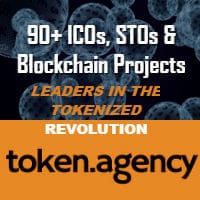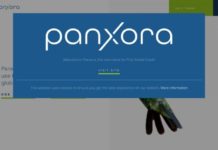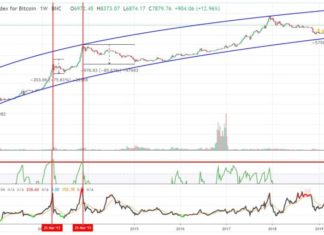[ad_1]
One of the more interesting projects that have come across my desk, not only in the Blockchain space but also in telecommunications, is Ammbr. This project an effort to ensure much greater inclusivity for the digital world and it aims to bring faster Internet to roughly half the global population who currently suffer bad or no connectivity.
I caught up with Derick Smith, the founder and Managing Director of the Ammbr Foundation, and CEO of AmmbrTech, the company building the first devices for the Ammbr Network, to dig deeper into the goals and strategies of this project, and the progress made thus far.
Richard Kastelein: Ammbr is now roughly 18 months old. You launched in 2017 with a comprehensive white paper that outlined a detailed technical roadmap, supported by a strong team of academics, practitioners and business professionals. What drove the foundation of the project?
Derick Smith: We set out to build a decentralized telecoms network, focusing on the so-called “Last Mile” problem. This is common to virtually any industry, but in telecoms, this refers to the difficulty of distributing fast, high-quality telecoms service from the network backbone to individual users. This has been fairly well executed by the large telecom operators in developed parts of the world but remains patchy, weak or non-existent in undeveloped parts. By developed I include most cities around the world, and by undeveloped, I also refer to rural and impoverished urban areas everywhere. For example, digital inclusion is as much a problem in large US cities as it is in parts of Nairobi. The problem is also not solely a matter of infrastructure, but also education, affordability, user devices, and empowerment.
Our primary focus is initially on the infrastructure. We identified several components early on that we deem important building blocks for the overall vision we wanted to achieve. These were a robust digital identity framework – which is being built out by projects like the Sovrin Foundation – and last mile infrastructure that can be built out by anyone from the large operators to individuals. Basically, we wanted a fully interoperable platform that entailed nothing more complex for a participant than switching on a device. If one is able to incentivize anyone to invest in infrastructure, even on a micro scale, that helps to improve the overall quality and reach of connectivity, and reduce the integration effort and cost to zero, then you have a potentially viral proposition that can harness any and all resources, not just those from large players.
Richard Kastelein: An ICO was planned but cancelled before it launched. You were plagued by a smart contract hack after listing your AMR token on an exchange, and quietly announced the launch of your first mesh routers. Can you give us an overview of Ammbr’s activities since inception?
Derick Smith: That more or less sums it up, but the devil is always in the details. Initially, we were intrigued and attracted to the new funding phenomenon of Initial Coin Offerings. However, we were also lucky enough to have extensive experience of securities law and the consequences of ignoring them, so in retrospect, I can say the decision to cancel our token sale in 2017 was a good one. The distraction cost us some development time but did afford us greater insights into the processes, and now that the regulatory environment has matured somewhat, we now feel comfortable and confident in selling tokens as a network funding mechanism. The Ammbr Foundation is finally kicking off a compliant sale of tokens through the Singularity exchange which will raise awareness while building out the support structures for the token economy of the Ammbr Network.
In 2018 we focused on product development. Hardware is difficult on many fronts, but we accelerated tremendously, to the first product launch in July 2018, and two further product launches by November. The maturation of these products through closed testbeds and proofs of concept demonstrations has now led to several key opportunities and partnerships. Over the course of the next few weeks, we will announce partnerships with industry leaders that lend speed to our product development and cost reduction roadmap.
More importantly, we have a number of strategically important sales closed, positioning us for a strong growth phase in 2019. In short, we have built a deep and agile research and development base and kicked off business development with early wins in populous markets in Asia, gained technical validation through sales to the US military, and we have gained access to incredible opportunities across Africa.
Richard Kastelein: The telecommunications equipment market is heavily contested by many fine OEMs. How is the Ammbr product range positioned and what benefits do you bring to this market?
Derick Smith: The first thing to understand is that we are not aiming to simply sell routers in competition with the OEMs on the market. That would be a losing proposition, plain and simple. What we bring is a radical change to the fundamental business models that drive telecoms today. Through these changes, we appeal to existing operators who need solutions to their problems – high CAPEX and OPEX and churn. To the marginal operators and players who cannot overcome the barriers to entry, we offer a solution that grants them access to a club they would ordinarily be barred from.
Richard Kastelein: What benefits do consumers get from Ammbr?
Derick Smith: From a connectivity standpoint we will empower operators of any scale to provide connectivity, meaning consumers will gain better geographic coverage. They will also have a greater choice in terms of cost, thus solving the affordability challenge for many.
In the beginning, connectivity pricing models will be fairly simple, but as the smart contracts progress consumers will be able to have a lot more control of their cost vs quality parameters. For example, a consumer may require short spurts of high-quality connectivity and will be prepared to pay a premium for it. For example, a channel-bonded, high-speed download capability for an urgent piece of content. At other times they be happy with lower priority service at a lower cost for regular browsing or texting.
Then there is the charitable capability, allowing grant money to be passed into subsidies seamlessly and with minimal friction. That will solve affordability for the most vulnerable members of society. They could leverage charitable donations to gain free access. Ad-revenue funded access is also being implemented by our partner in the Philippines.
Our goal is to deliver infrastructure that meets the demands of the consumer, rather than mandating one-size-fits-all rigid pricing determined by the operator. Market forces are ultimately the optimum path, so Ammbr must include the tools to dynamically apply those.
Richard Kastelein: What are your plans for the Ammbr Foundation, and how will it operate alongside your commercial venture, AmmbrTech?
Derick Smith: We deliberately started the Ammbr Foundation first, because we understand that an ecosystem requires multiple competing players. While we are the first movers with AmmbrTech, building the first solutions to realize the platform, we cannot be the ultimate arbitrators of who gets to play, and what the rules of engagement are. This would be a clear conflict of interest and we would not attract more commercial participants.
The Ammbr Foundation is therefore set up to control and manage the rules of governance of the network, and the core IP and branding. Those components were gifted to the foundation, while the founding team went on the establish the commercial entity, AmmbrTech.
A note on governance – we are building a collection of smart contracts, which will comprise the Ammbr DAO (distributed autonomous organization), which will practically enforce governance on the network. However, the credentials for humans to manage the DAO will reside with the Ammbr Foundation.
The directorship of the Ammbr Foundation must also ultimately be devolved into more hands in order to ensure a greater diversity of stakeholders.
Richard Kastelein: Thank you for that concise roundup. We are watching with keen interest to see what progress Ammbr makes in the coming year.
Disclaimer: Richard Kastelein is an advisor on the Ammbr project.
- Distilled Identity and Emerge Announce Technology Partnership to Solve Global Identity Crisis for Refugees – January 22, 2019
- Satellite Project SpaceChain Concludes the First Qtum Blockchain Transaction in Space – January 22, 2019
- AAX Digital Asset Exchange to be Powered by London Stock Exchange Group Technology – January 22, 2019
- Amsterdam’s Blockport Launches Full Featured Trading Platform – January 22, 2019
- Swarm Offers Free Issuance of Security Tokens – January 21, 2019
- London’s Blockchain Conference; Blockchain Expo Global Exhibition announces expert speakers – January 21, 2019
- Currency.com Launches Tokenised Securities Trading Platform – January 21, 2019
- Katallassos Launches a Standard Framework for Decentralised Derivatives – January 11, 2019
- Dutch Crypto Trading Marketplace Cryptohopper at CES 2019 – January 8, 2019
- Interview with Ammbr – A Blockchain-Enabled Mesh Network Bringing High Speed Internet to Emerging Economies – January 8, 2019
- Zion Market Research Report Explains: Global Blockchain In Energy Market likely to grow to USD 11,899 Million By 2024 – December 27, 2018
- Blythe Masters Resigns as CEO of Digital Asset – December 18, 2018
- Overstock’s Medici Ventures Uses Ravencoin Blockchain for Equity Purchase in Chainstone Labs – Completes $3.6 Million Securities Token Transfer – December 18, 2018
- Despite Market Downturn – eToro Survey Reveals Strong Interest in Cryptoasset Education – December 18, 2018
- BlockIMMO brings Blockchain Technology Platform to Tokenize Fractional Real Estate Investment – December 17, 2018
- Algorand Appoints Dual Ph.D. Rock Star Pablo Azar as Chief Economist – December 17, 2018
- Dascoin – Anatomy of Multilevel Marketing Crypto Scam – Coinmarketcap Zero – December 17, 2018
- Dutch Blockchain Company Tymlez Group Starts Trading on Australian Stock Exchange (ASX) – December 13, 2018
- DNAtix Releases Live Demo of its Blockchain based Genetic Infrastructure Platform – December 11, 2018
- IOHK Launches Secure Smart Contracts Technology for Cardano blockchain – December 11, 2018
[ad_2]
Source link







